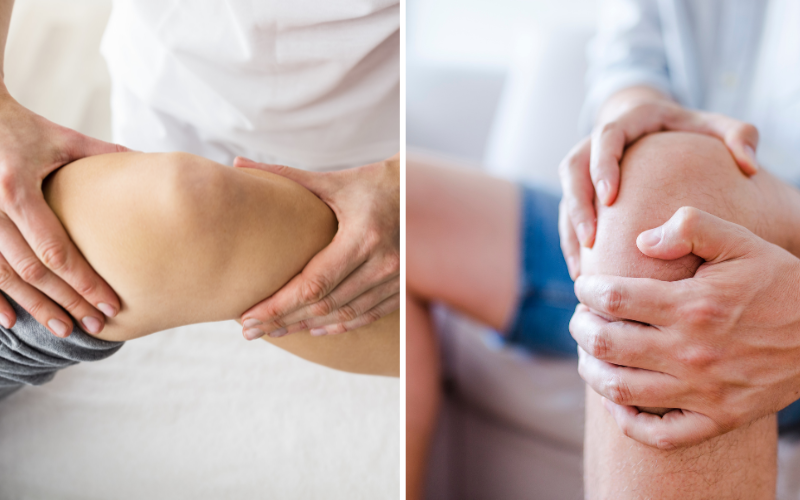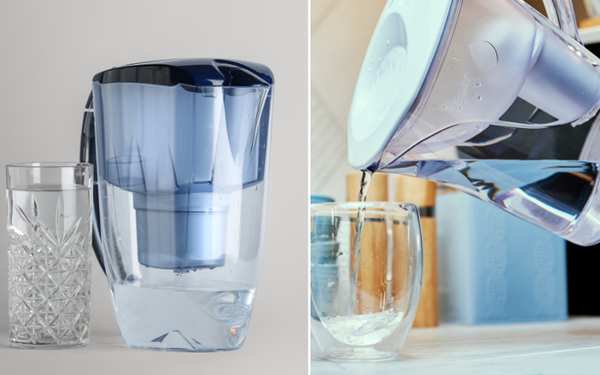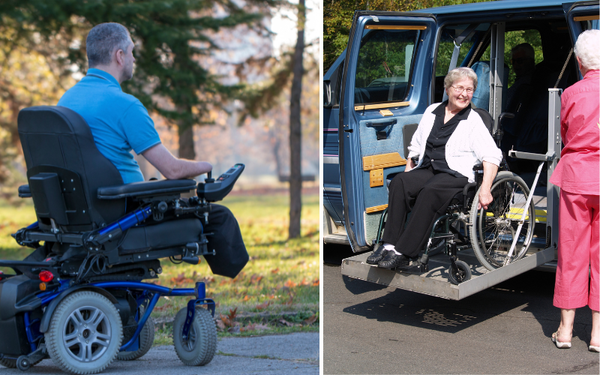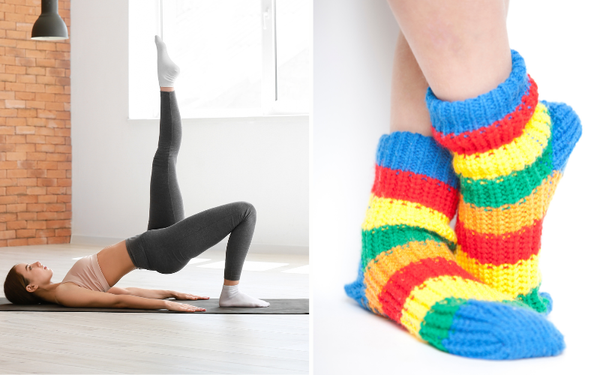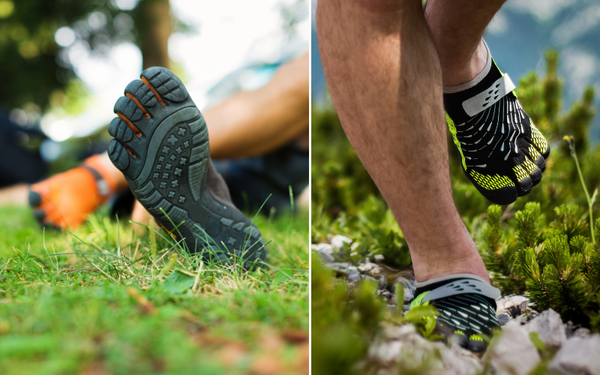Knee pain can be a debilitating experience, impacting daily life and restricting mobility. Many people turn to massage as a potential solution, but is it good to massage your knee? This blog post delves into the root causes of knee pain, the benefits of massaging your knee, and when to avoid massage. We will explore various massage techniques, the role of professional massage therapy, and tips for maintaining healthy knees. Let’s embark on a journey to understand the complexities of knee pain and the role of massage in providing relief.
Key Takeaways
- Massage therapy can provide numerous benefits for knee health, including improved circulation, pain relief and increased flexibility.
- Professional massage therapy is necessary to identify underlying issues and create an effective treatment plan for persistent knee pain.
- Following a healthy lifestyle and engaging in low impact exercise are essential components of maintaining healthy knees with the help of massage.
Understanding Knee Pain and Its Causes

Knee pain is an all-too-common issue, affecting approximately 25% of adults. It can stem from a variety of sources, such as injuries, medical conditions, and age-related deterioration. The knee is one of the most complex joints in the body, making it susceptible to a myriad of problems. A comprehensive system evaluation by a healthcare professional can help determine the cause and appropriate treatment.
To comprehend the advantages of massage for knee pain, we must examine the various causes of knee pain and their impact on our daily existence.
Injuries and Overuse
Injuries and overuse are common culprits behind knee pain. Athletes and individuals with physically demanding jobs often experience repeated stress on the knee, leading to inflammation of tendons and ligaments, causing pain, swelling, stiffness, and limited movement. Some common knee injuries include ACL injury, fractures, torn meniscus, patellar tendinitis, and ligament tears, which can be caused by aging, repetitive strain, or sudden trauma. Therefore, prompt medical attention is essential for effective treatment of knee pain resulting from injuries, overuse, or degenerative joint disease.
Massage therapy, including therapeutic massage, can play a vital role in alleviating pain caused by injuries and overuse. Targeting the thigh muscles and surrounding tissues, massage can help reduce inflammation, promote healing, and relax tense muscles. However, bear in mind that each injury is unique, requiring a tailored massage therapy approach based on the individual’s specific needs and circumstances.
Medical Conditions Affecting the Knee
Medical conditions such as osteoarthritis, tendinitis, and ligament issues can also be the source of knee pain and discomfort. Knee osteoarthritis (OA) is a degenerative joint disease that affects millions of people worldwide. The exact cause of knee OA is yet to be determined, but factors like genetics, obesity, prior knee injuries, and overuse may play a role.
Current treatment approaches for knee OA involve:
- Exercise
- Physical therapy
- Weight management
- Supportive devices
- Medications
- Surgery
Research has shown that massage therapy can be beneficial for individuals with knee OA, as it can reduce pain, stiffness, and enhance functional status. The improvement in pain may be related to the medial thigh muscle, emphasizing the importance of targeting the right areas during massage. Therefore, comprehending the underlying medical condition and customizing the massage accordingly is key to unlocking its potential benefits.
Age-Related Wear and Tear
As we age, our knee joints become more susceptible to wear and tear, leading to pain and reduced mobility. Age-related wear and tear is the gradual deterioration of the cartilage that serves as a cushion for the knee joint, resulting in inflammation, pain, and stiffness. The indications of age-related wear and tear include pain, stiffness, swelling, and decreased mobility.
Various treatment options are available for age-related wear and tear, such as:
- Rest
- Physical therapy
- Medications
- Massage
Massage therapy can help alleviate pain and improve circulation, making it a valuable addition to a comprehensive treatment plan for age-related knee pain.
The Benefits of Massaging Your Knee

Massaging your knee can offer numerous benefits, including improved circulation, pain relief, and increased flexibility. By targeting the muscles and soft tissues surrounding the knee, massage therapy can diminish inflammation, swelling, and discomfort, enhance circulation and range of motion, and reinforce the muscles.
Additionally, it may help disintegrate scar tissue, reduce rigidity, and augment mobility. We should examine these benefits in more detail and understand how various massage techniques can help in achieving them.
Improved Circulation and Reduced Inflammation
Knee massage can help enhance circulation by promoting the flow of oxygen and nutrients to the area, thereby reducing pain and inflammation. Improved circulation in the knee can provide a range of benefits, such as:
- Increased delivery of oxygen and fresh blood to the knee muscles
- Effective elimination of waste products from the knee muscles
- Improved supply of nutrients to the knee joint
- Decreased risk of blood clots
- Potential alleviation of knee pain
- Improved joint performance
By reducing inflammation and promoting blood flow, massage can aid in the healing process and prevent further injury. This is particularly beneficial for individuals recovering from knee injuries or managing chronic knee pain caused by degenerative joint diseases like osteoarthritis.
Pain Relief and Muscle Relaxation

Massaging the knee can alleviate pain by relaxing tense muscles and breaking up scar tissue. The advantages of relieving pain in the knee include increased mobility, reduced dependence on pain medications, decreased inflammation, accelerated healing, decreased need for surgical interventions, improved balance and stability, and increased energy levels and capability to exercise.
Various self-massage techniques, including foam rolling, trigger point therapy, and massage balls, can be employed for knee massage. Additionally, professional massage therapy is available for knee massage, offering targeted treatments to address your specific knee pain and improve overall joint health.
Enhanced Flexibility and Range of Motion
Regular knee massage can improve flexibility and range of motion by reducing muscle tension and stiffness around the joint. By targeting the muscles and tissues surrounding the knee, massage can help relax the muscles around the knee joint, thus increasing the range of motion and improving flexibility.
Increased flexibility and range of motion not only alleviate knee pain but also help prevent future injuries and improve overall joint health. Incorporating massage into your regular self-care routine can contribute to maintaining healthy, pain-free knees for years to come.
When Not to Massage Your Knee
Although massage can be an effective measure in managing knee pain, recognizing when not to massage your knee is equally important. Certain conditions and situations may make knee massage inadvisable, such as osteoporosis, varicose veins, or high blood pressure. Moreover, it is not recommended to massage a knee with an acute injury, such as a recent fracture or sprain, or if there is an open wound or infection in the knee area.
If an underlying medical condition exists or the cause of your knee pain is unclear, seeking advice from a healthcare professional before massaging the knee is strongly advised. They can help determine the root cause of your pain, suggest appropriate treatments, and advise you on whether massage is suitable for your specific situation.
Techniques for Massaging Your Knee
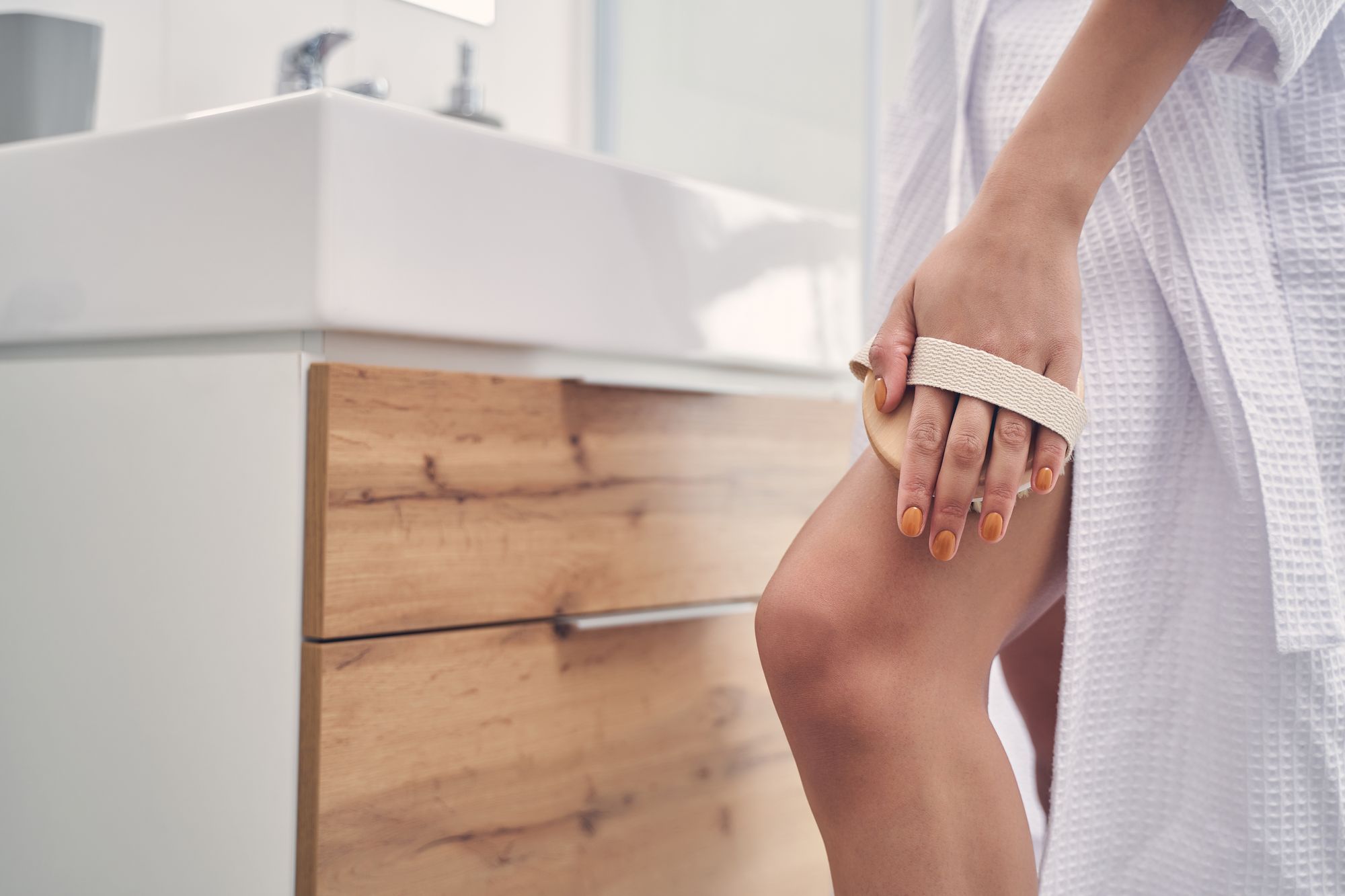
Various massage techniques can be used to address knee pain, both through self-massage and professional therapy. Some effective techniques include:
- Thigh tapping
- Gliding strokes
- Kneading
- Friction
- Compression
- Stretching
Massage can help alleviate pain and improve circulation in the affected knee.
We should examine various massage techniques for the knee and understand their potential relief effects.
Self-Massage Methods
Self-massage techniques, such as thigh tapping and gliding strokes, can help alleviate knee pain and improve circulation. Thigh tapping involves gently tapping the thigh muscles with the fingertips, starting at the top of the thigh and working your way down to the knee. This technique can be done three times, with 10 taps per repetition, promoting relaxation and improved circulation.
Gliding strokes, such as the inner thigh glide and front thigh glide, involve gently gliding your hands along the thigh, helping to soothe tight muscles and enhance blood flow. Regular self-massage can be an effective way to manage knee pain and promote overall joint health.
However, practicing the correct massage technique is crucial, along with avoiding excessive pressure or massaging injured areas. Consult a healthcare professional or a massage therapist if you’re unsure about the best techniques for your specific situation.
Professional Massage Therapy
Professional massage therapists can provide targeted treatments to address knee pain and improve overall joint health. They possess the expertise to assist individuals with various joint and muscular issues and can determine the optimal massage style to provide relief from painful or arthritic knees. Massage therapy for knee pain has been shown to produce minimal clinically important changes for pain relief, with the pressure-pain threshold improving significantly for pain both at rest and while walking.
If self-massage techniques aren’t providing the desired relief, consider visiting a licensed massage therapist. They can offer personalized treatments tailored to your specific needs and help you achieve better results in managing knee pain. Be sure to communicate any concerns or medical conditions to your therapist so they can adjust the treatment accordingly.
Seeking Medical Help for Persistent Knee Pain
Seeking medical assistance for persistent knee pain is necessary to establish the best treatment route and identify any serious underlying issues. A healthcare professional can recommend appropriate treatments such as surgery, physical therapy, or pain medications, and help you form a comprehensive treatment plan.
Knee pain can occur in complex, persistent or severe cases, sometimes as a result of a knee injury. It is recommended to consult a physical therapist who has the necessary knowledge and practical skills to help strengthen and restore the affected joint. An effective medical best practice plan can be implemented to reduce the discomfort and improve mobility.
If you experience knee pain following a trauma, such as a fall or motor vehicle accident, it is crucial to report the pain to your practitioner right away, as further testing or treatment may be necessary. Remember, while massage can play a role in managing knee pain, it should be used in conjunction with other treatments and under the guidance of a healthcare professional.
Tips for Maintaining Healthy Knees
Maintaining healthy knees involves a combination of lifestyle choices, proper posture, regular exercise, and supportive footwear. Here are some tips for preserving healthy knees:
- Abstain from smoking
- Attain a healthy weight
- Consume a balanced diet
- Engage in low-impact exercises such as walking, swimming, and cycling to promote knee health
- Perform strengthening exercises like squats and lunges to strengthen the muscles surrounding the knee joint
By following these tips, you can help keep your knees healthy and strong.
Proper posture and supportive footwear play a significant role in reducing strain on the knee joint and preventing injury. Additionally, allowing adequate time for rest and recovery is crucial for knee health, as it enables the muscles and joints to recuperate from exercise and prevent injury.
By incorporating these tips into your daily routine, you can help reduce knee pain, maintain healthy, pain-free knees, and enjoy an active lifestyle.
The Role of Massage in Knee Pain Management
Although massage can contribute to managing knee pain, it should be utilized alongside other treatments under the supervision of a healthcare professional. Studies have shown that massage therapy and aromatherapy can provide short-term relief from knee pain, but their efficacy is somewhat controversial, as researchers are yet to determine if they truly address the knee pain or the muscles in the thigh.
In conclusion, massage can be a valuable tool in managing knee pain, helping to improve circulation, alleviate pain, and increase flexibility. However, understanding the root cause of your knee pain, employing suitable massage techniques, and consulting a healthcare professional are pivotal to ensuring optimal results. By incorporating massage into a comprehensive treatment plan, you can effectively manage knee pain and improve overall joint health.
Summary
Throughout this blog post, we’ve explored the various causes of knee pain, the benefits of massaging your knee, and when not to massage. We’ve also discussed different massage techniques for self-massage and professional therapy, as well as the importance of seeking medical help for persistent knee pain. By understanding the complexities of knee pain and the role of massage in providing relief, you can make informed decisions about your knee health and treatment options. Remember to consult a healthcare professional before trying any new treatments, and above all, listen to your body and prioritize your well-being.
Frequently Asked Questions
Should you massage your knee if it hurts?
Massage can be a beneficial treatment for knee pain, as it can reduce inflammation, improve circulation, strengthen the muscles and soft tissues around the knee, and increase range of motion. Research has also suggested that massage therapy can help with reducing pain and improving knee function for those with osteoarthritis. Therefore, massaging your knee may help relieve pain and discomfort.
Why does rubbing knee feel good?
Massage therapy can help relieve knee pain by reducing muscle tension and stiffness, increasing blood flow to the area, and breaking up scar tissue. This allows for proper blood flow and oxygen to get into the joint as well as providing relaxation which helps reduce the throbbing sensation.
What are the primary causes of knee pain?
Knee pain can be caused by a variety of factors, including injuries, medical conditions, and age-related deterioration.
How can massage help alleviate knee pain?
Massage can help reduce inflammation and muscle tension, improve circulation, and promote relaxation in the knee joint, providing relief from pain.
When should I avoid massaging my knee?
If you have osteoporosis, varicose veins, high blood pressure, an acute injury, or an open wound or infection in the knee area, you should avoid massaging your knee.
You Might Also Like...
